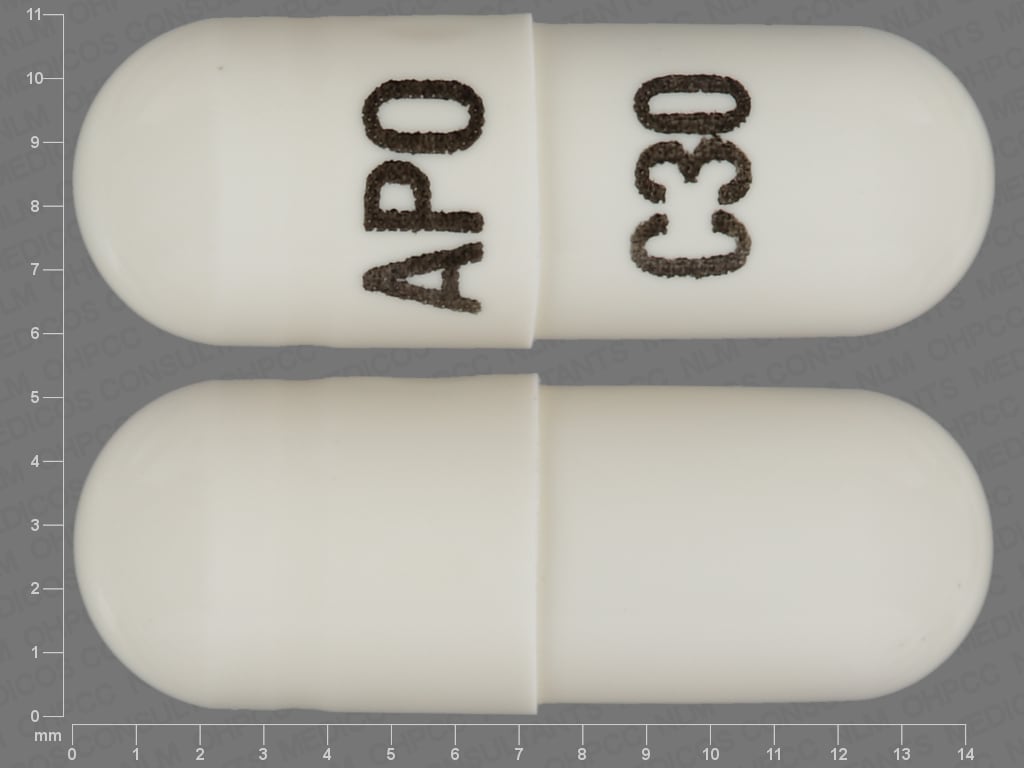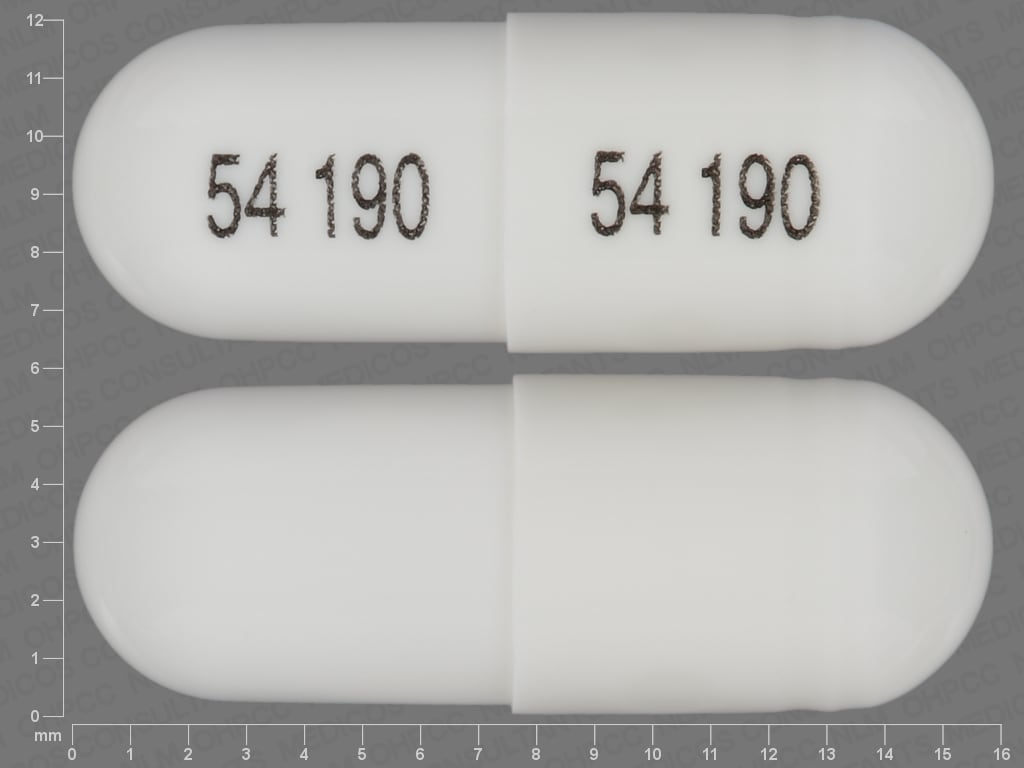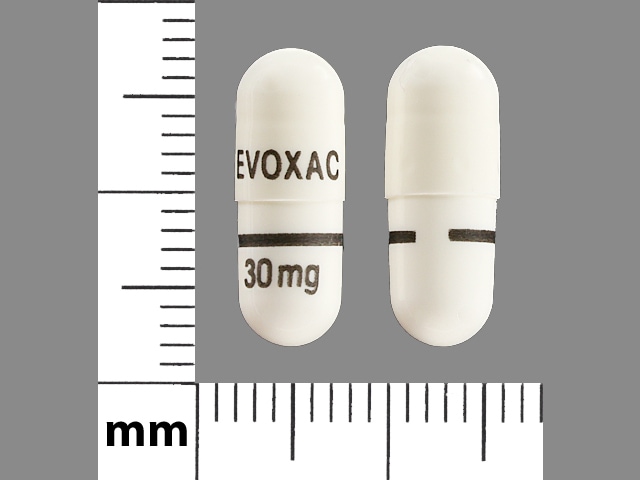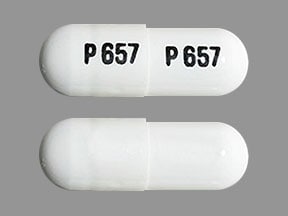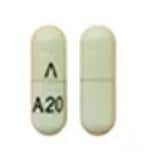Dosage Forms
Excipient information presented when available (limited, particularly for generics); consult specific product labeling.
Capsule, Oral, as hydrochloride:
Evoxac: 30 mg
Generic: 30 mg
Pharmacology
Mechanism of Action
Binds to muscarinic (cholinergic) receptors, causing an increase in secretion of exocrine glands (such as salivary and sweat glands) and increase tone of smooth muscle in gastrointestinal and urinary tracts
Pharmacokinetics/Pharmacodynamics
Absorption
Rapid; food decreases rate of absorption
Distribution
Vd: 6 L/kg
Metabolism
Hepatic via CYP2D6, CYP3A3, and CYP3A4; metabolites: cis and trans-sulfoxide, glucuronic acid conjugate, N-oxide metabolite
Excretion
Urine (84% in 24 hours, 97% in 7 days); feces (0.5% in 7 days)
Time to Peak
1.5 to 2 hours
Half-Life Elimination
5 ± 1 hours
Protein Binding
<20%
Use: Labeled Indications
Xerostomia (associated with Sjögren's syndrome): Treatment of symptoms of dry mouth in patients with Sjögren's syndrome.
Contraindications
Hypersensitivity to cevimeline or any component of the formulation; uncontrolled asthma; when miosis is undesirable (eg, narrow-angle glaucoma, acute iritis)
Dosage and Administration
Dosing: Adult
Xerostomia (associated with Sjögren's syndrome): Oral: 30 mg 3 times/day
Dosing: Geriatric
Refer to adult dosing.
Storage
Store at 25°C (77°F); excursions permitted to 15°C to 30°C (59°F to 86°F).
Cevimeline Images
Drug Interactions
Acetylcholinesterase Inhibitors: May enhance the adverse/toxic effect of Cholinergic Agonists. Monitor therapy
Beta-Blockers: May enhance the adverse/toxic effect of Cholinergic Agonists. Of particular concern are the potential for cardiac conduction abnormalities and bronchoconstriction. Monitor therapy
Cimetropium: Cholinergic Agonists may diminish the anticholinergic effect of Cimetropium. Monitor therapy
Sincalide: Drugs that Affect Gallbladder Function may diminish the therapeutic effect of Sincalide. Management: Consider discontinuing drugs that may affect gallbladder motility prior to the use of sincalide to stimulate gallbladder contraction. Consider therapy modification
Adverse Reactions
Frequency not always defined.
>10%:
Dermatologic: Diaphoresis (19%)
Gastrointestinal: Nausea (14%)
Respiratory: Sinusitis (12%), rhinitis (11%), upper respiratory tract infection (11%)
1% to 10%:
Cardiovascular: Chest pain, edema, palpitations, peripheral edema
Central nervous system: Fatigue (3%), insomnia (2%), depression, hypertonia, hypoesthesia, hyporeflexia, migraine, vertigo
Dermatologic: Dermatological disease, erythematous rash, pruritus
Endocrine & metabolic: Hot flash (2%), increased amylase
Gastrointestinal: Abdominal pain (8%), vomiting (5%), sialorrhea (2%), anorexia, aphthous stomatitis, constipation, eructation, flatulence, gastroesophageal reflux disease, hiccups, salivary gland pain, sialadenitis, toothache, xerostomia
Genitourinary: Urinary tract infection (6%), cystitis, vaginitis
Hematologic & oncologic: Anemia
Hypersensitivity: Hypersensitivity reaction
Infection: Abscess, candidiasis, fungal infection, infection
Neuromuscular & skeletal: Back pain (5%), arthralgia (4%), skeletal pain (3%), weakness (1%), leg cramps, myalgia, tremor
Ophthalmic: Eye disease, eye infection, eye pain, visual disturbance, xerophthalmia
Otic: Otalgia, otitis media
Respiratory: Cough (6%), bronchitis (4%), epistaxis, flu-like symptoms, pneumonia
Miscellaneous: Accidental injury (5%), fever
<1%, postmarketing, and/or case reports: acute exacerbations of multiple sclerosis, aggressive behavior, alopecia, angina pectoris, anterior chamber eye hemorrhage, aphasia, apnea, arthropathy, avascular necrosis of femoral head, bronchospasm, bullous rash, bundle branch block, cardiac arrhythmia, cardiac disease, cholecystitis, cholelithiasis, cholinergic syndrome, deafness, dehydration, delirium, dementia, depersonalization, diabetes mellitus, dyskinesia, ECG abnormality, emotional lability, eosinophilia, esophageal stenosis, esophagitis, extrasystoles, facial edema, gastric ulcer, gastrointestinal hemorrhage, gingival hyperplasia, glaucoma, granulocytopenia, hallucination, hematoma, hematuria, hepatic insufficiency, hyperglycemia, hyperkalemia, hypertension, hypoglycemia, hypotension, hypothyroidism, immune thrombocytopenia, impotence, increased liver enzymes, intestinal obstruction, inversion T wave on ECG, irritable bowel syndrome, leukopenia, lymphocytosis, manic reaction, menstrual disease, myocardial infarction, nephrolithiasis, neuropathy, paralysis, paranoia, paresthesia, peptic ulcer, pericarditis, peripheral ischemia, skin photosensitivity reaction, pleural effusion, pulmonary embolism, pulmonary fibrosis, rectal disease, renal insufficiency, seizure, sepsis, supraventricular tachycardia, syncope, systemic lupus erythematosus, tachycardia, tenosynovitis, thrombocytopenia, thrombophlebitis, ulcerative colitis, urinary retention, urination disorder, vasculitis
Warnings/Precautions
Concerns related to adverse effects:
- Parasympathomimetic effects: Toxicity is characterized by an exaggeration of parasympathomimetic effects (eg, atrioventricular block, bradycardia, cardiac arrhythmia, hypotension, lacrimation, sweating, respiratory distress, tachycardia, tremors, vomiting); excessive sweating may lead to dehydration in some patients.
- Visual effects: May cause blurred vision, decreased visual acuity (particularly at night and in patients with central lens changes) and impaired depth perception. Patients should be cautioned about driving at night or performing hazardous activities in reduced lighting.
Disease-related concerns:
- Cardiovascular disease: Use with caution in patients with significant cardiovascular disease (including angina, myocardial infarction); may alter cardiac conduction and/or heart rate.
- Cholelithiasis: Use with caution in patients with a history of cholelithiasis; may induce contractions of the gallbladder or biliary smooth muscle, precipitating complications such as cholangitis, cholecystitis, or biliary obstruction.
- Nephrolithiasis: Use with caution in patients with a history of nephrolithiasis; may induce smooth muscle spasms, precipitating renal colic or ureteral reflux in patients with nephrolithiasis.
- Respiratory disease: Use with caution in patients with controlled asthma, COPD, or chronic bronchitis; may increase bronchial smooth muscle tone, airway resistance, and bronchial secretions.
Special populations:
- Patients with CYP2D6 deficiency: Patients with a known or suspected deficiency of CYP2D6 may be at higher risk of adverse effects.
Pregnancy
Pregnancy Considerations
Adverse effects were observed in animal reproduction studies.
Patient Education
What is this drug used for?
- It is used to treat dry mouth.
Frequently reported side effects of this drug
- Decreased night vision
- Runny nose
- Stuffy nose
- Common cold symptoms
- Heartburn
- Cough
- Abdominal pain
Other side effects of this drug: Talk with your doctor right away if you have any of these signs of:
- Urinary tract infection like blood in the urine, burning or painful urination, passing a lot of urine, fever, lower abdominal pain, or pelvic pain.
- Shortness of breath
- Severe nausea
- Severe vomiting
- Severe diarrhea
- Fast heartbeat
- Slow heartbeat
- Abnormal heartbeat
- Confusion
- Vision changes
- Severe headache
- Tremors
- Sweating a lot
- Dehydration
- Watery eyes
- Abdominal cramps
- Severe dizziness
- Passing out
- Signs of a significant reaction like wheezing; chest tightness; fever; itching; bad cough; blue skin color; seizures; or swelling of face, lips, tongue, or throat.
Note: This is not a comprehensive list of all side effects. Talk to your doctor if you have questions.
Consumer Information Use and Disclaimer: This information should not be used to decide whether or not to take this medicine or any other medicine. Only the healthcare provider has the knowledge and training to decide which medicines are right for a specific patient. This information does not endorse any medicine as safe, effective, or approved for treating any patient or health condition. This is only a brief summary of general information about this medicine. It does NOT include all information about the possible uses, directions, warnings, precautions, interactions, adverse effects, or risks that may apply to this medicine. This information is not specific medical advice and does not replace information you receive from the healthcare provider. You must talk with the healthcare provider for complete information about the risks and benefits of using this medicine.
